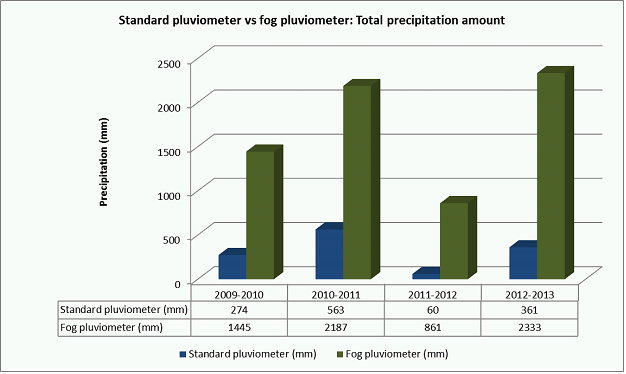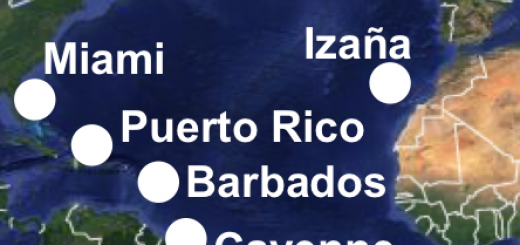Rainfall during the hydrometeorological year 2012-2013 was below average in Izaña
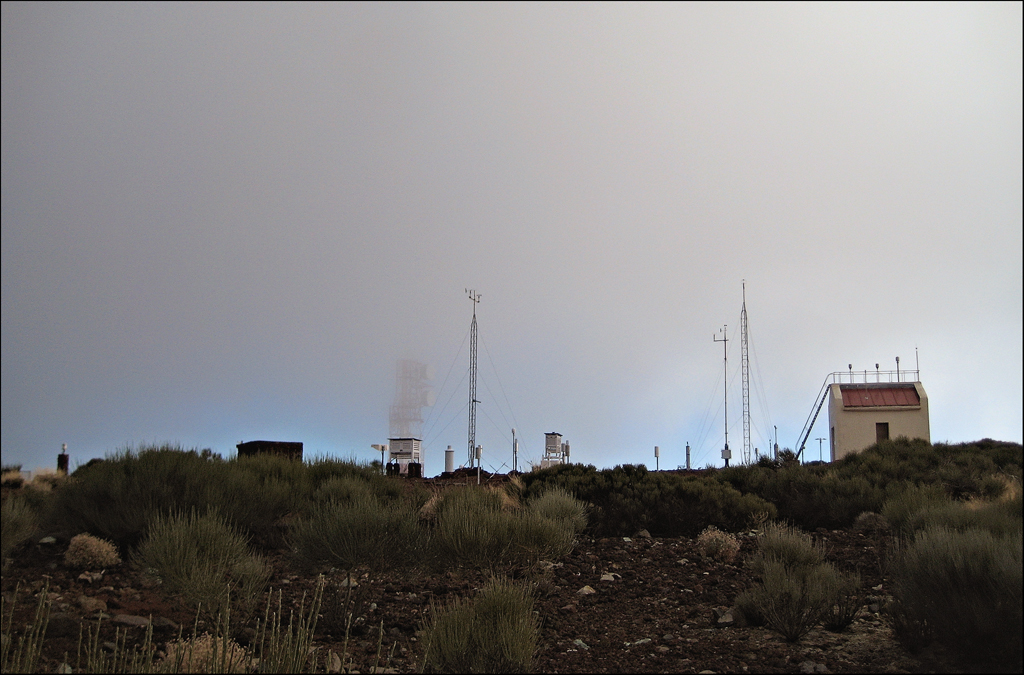
The hydrometeorological year or crop year begins on September 1st of one year and ends on 31st August of the following year. A total rainfall of 332.4 mm (litres per square meter) was collected during the 2012-2013 hydrometeorological year at the high mountain Izaña Observatory, located at the island of Tenerife, 2,364 m altitude, within the Teide National Park. If we compare this amount with the average rainfall of the reference period 1971-2000 (433 mm) we conclude that the last hydrometeorological year has been dry.
When we break down the precipitation by seasons we find that autumn 2012 (September, October and November 2012) was very rainy because the arrival of many Atlantic storms: we collected almost twice the average precipitation that normally falls in this season. However, later on, predominated anticyclonic conditions and both winter and spring were drier seasons than usual, especially the winter period when the amount of rainfall recorded in December, January and February did not reach even one-third of the normal mean. In addition, the snow was scarce at Izaña. In spring we collected somewhat more than half of the normal amount for that season. On the contrary, in summer 2012 there was more rainfall than usual: almost twice normal value. However the total rainfall in summer is quite low in any case: 6mm in summer 2012 compared to an average of about 3mm for a mean summer. Most of the precipitation in summer 2012 was collected on early morning of August 21st. During the rest of the summer no rainfall was recorded.

In blue, precipitation values collected in the hydrometeorological seasons in 2012-2013. In red, mean values for the reference 1971-2000 period.
Moreover, since 2009 precipitation due to fog, also known as “hidden precipitation” or “horizontal precipitation” has been measured experimentally at Izaña (for more information see news of 2010 by clicking here). To this end we have modified Hellmann rain gauge, to which we have attached a mesh attempting to mimic the uptake of fog droplets by vegetation. Values are compared with those obtained with a conventional rain gauge located two meters away. We collected a total of 2,333mm with the fog-gauge in the hydrometeorological year 2012-2013, while the conventional rain gauge collected 361mm: the fog-gauge collected an amount of water was about six and half times higher that recorded as rain.
The difference of precipitation records between the official automatic pluviometer (332 mm) and the standard one (361mm) used together with the fog pluviometer, is due to the different measurement method of each instrument.
Quantification of the amount of water derived exclusively from the fog is complicated, and needs to be corrected by a factor less than 1, because the mesh attached to the rain gauge to capture the fog droplets overestimate the “normal” rain. However, in any case is evident that the contribution of water from fog is very high.
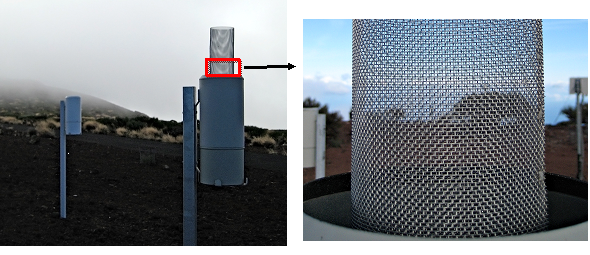
Left: in the foreground, Hellmann rain gauge with the cylindrical mesh attached to uptake water from fog. In the background, conventional Hellmann rain gauge used to compare the classical precipitation collected on both gauges. Right: detail of the 2mm side grid. This mesh is intended to mimic the uptake of fog droplets in the way that vegetation does. In the picture below you can see how the droplets have been captured by the needles of a “Canariensis” pine.

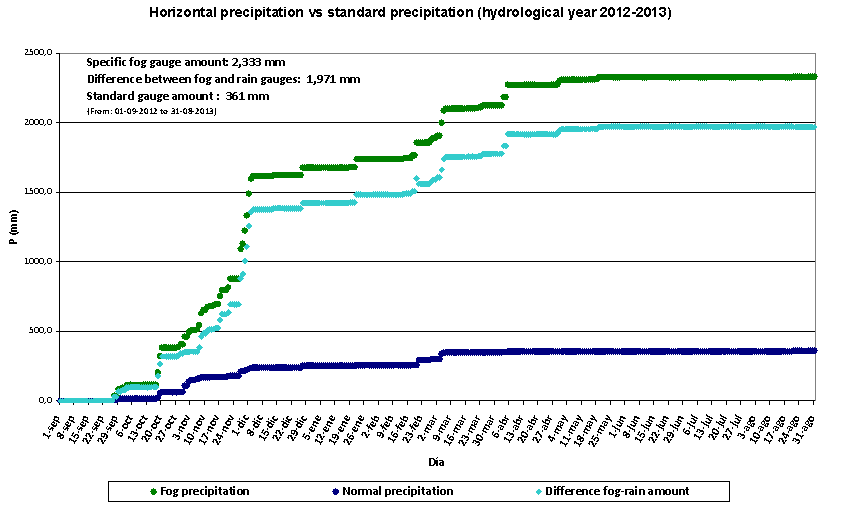
Accumulated horizontal precipitation (water collected from fog) and classical rainfall records from September 1st, 2012 to August 31st, 2013. The cumulative difference between the two types of precipitation values has been also plotted.
The following chart shows the annual averaged precipitation collected by a classical rain gauge and the annual averaged water collected with a fog-gauge for the last four hydrometeorological years. The fog-gauge collects an amount of water 4 to 7 times higher than classical precipitation, except in the extremely dry hydrometeorological 2011-2012 year, when the amount was 14 times higher. Although longer records and more accurate assessments are needed to draw conclusions, this preliminary 4-year data give us an idea of the potential importance of capturing fog water by vegetation as a complementary water supply, especially in drought years. These results indicated that the importance of fog supplying additional water is not only in the areas directly exposed to the trade winds, but also in areas located above the influence of these chilly and moist winds, as the level of the Izaña Observatory.
